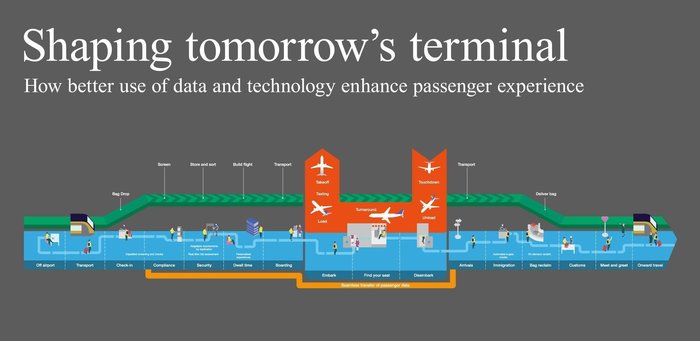Alan Newbold, director and digital transport leader at Arup, discusses the benefits of data sharing across the aviation industry
The aviation industry is waking up to the potential of digital technology. It’s now top of CEOs’ agendas across the globe, with airports increasingly having to compete to provide seamless passenger experiences and grow non-aeronautical revenue streams.
A better understanding and the collaborative sharing of data is essential for passengers, airlines, control authorities, retailers and airports – but utilizing this data won’t come without its challenges for the industry.
Benefits to passengers
Airports need to make sure they are using the right types of technology. There can be over five generations traveling through an airport at any given time and tailoring products so that all have a great experience is quite a challenge. Having information on passenger preferences – around dining and shopping, for example – can uncover potential services and entertainment offerings that grow non-aeronautical revenue.
Benefits to airports
Some processes within the aviation industry are further along than others when it comes to using data. For example, the benefits of implementing more intelligent systems for baggage handling, or adoption of radio-frequency identification (RFID) tags, is obvious.
Digital has implications for everyone and everything – including how we plan and design the physical airport facilities, and how they operate day-to-day.
As consultants, we currently undertake operational planning through simulation, using the data from spreadsheets and information we receive. Moving forward, real-time input from the airport could enable us to develop and propose scenarios in a faster, more accurate way, using better data, analytics and visualizations.
We should be able to use the data from the planning stages in both the design and operational stages – currently these three areas of expertise are largely siloed. If we were able to bring them together, the operator would have access to high-quality information in a real-time environment on a platform connected to their asset management database, and can operate the airport more efficiently.
The gains from more efficient planning mean airports get more bang for their buck and can deliver capital and investment in the right way (rather than lower value projects), increase aeronautical revenue, and improve the passenger experience.
Why collaboration is key
For government agencies, airports and airlines, collaboration is now key to realizing the benefits of data. The airport only owns between 5% and 20% of the data the aviation process generates – which isn’t much at all.
This is because of the use of outsourced contractors, such as baggage handling operators, who generate (and use) the data themselves, with airports often actually having no way of accessing it.
All parties need to realize the value of becoming digital collaborators, bringing stakeholders and partners together to generate more value than if they kept it to themselves. This could be to improve the passenger experience, increase operational efficiencies and revenue, or to strengthen security. Arup is currently working through the challenge of connecting data that the airport generates with the data that contractors and airlines collect to prove this point.
Our work with Saudi Aviation IT on its national digital aviation strategy is a great example of putting in place mechanisms for collaboration from the outset across the country’s 27 airports. The advantage here is that you have the government, regulator, airport owner and airlines all working with one voice.
We applied what we know about the digital airport, creating an entire business strategy, identifying how to generate revenue, how to improve the use of data, how to gain the skilled people needed and how to diversify the business.
But, it’s not without its challenges
One of the big challenges is getting clients to understand the leaps they need to make at a time when they’re still unfamiliar with some of the new digital technologies. We’ve seen big changes in our traditional approach to consulting – where clients come to us with a pre-existing need.
Instead, we’re analyzing an airport’s data to diagnose issues and then find solutions to improve operations. This new approach is proving successful and airports are generally very receptive, but the next challenge is how you connect this data to better outcomes.
This is an exciting and transformative time for the aviation industry. What is becoming more and more evident, is that consultants and advisors will have a big role to play in shaping these collaborations, showing how they can be effective and mutually beneficial.

